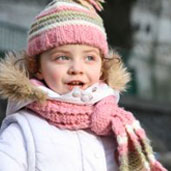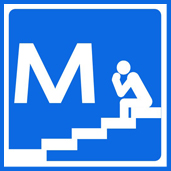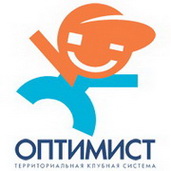Moscow pupils try their hand at 3D modelling
27.10.2016 18:00 Просмотров: 0
3D Boom is a contest for 8th to11th graders that runs for two months. Teams will learn to use professional software to design digital models to build real-life equipment on laser cutting machines or 3D printers. The contest partners are universities and large IT companies. Nearly 300 pupils from 76 Moscow schools will compete.
“Our goal is to introduce pupils to the profession of product design engineer, which is a high-demand profession. Each group will work on their project from beginning to end. Also, we want to encourage teachers to promote this approach at their schools, because an increasing number of schools have high-tech equipment,” said Igor Marchak, head of the School of New Technologies project and contest co-organiser.
Space exploration is the main theme of the second 3D Boom contest, because this year we marked 55 years since Yuri Gagarin became the first man in space. The teams chose from the following categories: Satellites and Manned Flight/The Art of Technology, Robots in Space, NC Machines, Space Shuttle Interior and Exterior, Space Vehicles, Children for Children: 3D Aids for Visually Impaired Children.
The latter category is not related to space, but contest organisers have decided to include it in all subsequent contests because of its social significance. Contestants will design special books with 3D illustrations.
Each category is sponsored by a university, including Moscow Polytechnic University, Moscow State Technological University Stankin and the Stroganov Moscow State Academy of Design and Applied Arts. The contesting teams will work at the respective universities, which have the necessary equipment for 3D modelling, including 3D printers, laser cutting machines and 3D scanners. In addition to university faculty, corporate IT experts will help the contestants.
“Each team will meet with representatives from the respective universities soon and decide what project to pursue. Some of them have chosen the theme Space Shuttle Interior and Exterior. They can design a control room, a lounge or some other room,” Igor Marchak said.
Each team will also have a school curator, mostly IT, drawing or crafts teachers. Experts from the IT company Autodesk will instruct the teachers in Fusion 360 product design and development software. Then the pupils will learn to use the software and start working on their models.
Assessment criteria:
— Number of parts: 30 points;
— Compliance with technical requirements: 40 points;
— Number of software tools used: 20 points;
— Production feasibility: 20 points;
— Production budget: 10 points;
— Ability to work in a team; quality and originality of presentation: 30 points.
The winners in each category (1st, 2nd and 3rd places) will receive additional points on their Unified State Exam if they decide to enrol at the university that sponsored their project, as well as prizes from contest organisers and partners.
“Last year, the schools whose teams placed in the top three received 3D printers. The students will receive various devices, but that’s not the point. The main thing is to show their potential, to be noticed and invited for onsite training, and they also want their projects to see production,” Igor Marchak said.
The winners will also have a chance to receive an international software knowledge certificate.
Children for children
Participants in the Children for Children category will create 3D teaching aids for visually impaired children, which imply not just engineering and technical skills but also communication skills.
“Each team will have to correctly formulate the question, find the correct answer and provide a rationale for their decision. This implies engineering and technical skills, the ability to work with text and paper, and most importantly, very specific and responsible communication experience,” said Lyubov Samborskaya, deputy head of the consultative council of parents at Moscow ‘s Department of Education.
She said this category covers three practical components: working with mechanisms and systems; working with paper; and working with people. This experience will help the students choose their future education and career.
Last year, contestants in this category created a navigator for the visually impaired, a biology book with a collapsible cell model, and a chemistry book.
The first 3D Boom contest lasted five months and involved over 200 pupils from 47 Moscow schools. Some projects received high acclaim from special engineering centres and are advancing toward production.
3D Boom is part of the School of New Technologies, a cooperative project of the Education Department and the Department of Information Technology. It aims to support education innovation and the technological modernisation of schools, which should become laboratories where pupils can implement the most daring of their ideas. The schools were screened to take part in this project.
The first contest was held in 2013, when only 20 of the more than 400 applicants received the new status. The second contest was in April 2014 and involved 436 schools, and over 16,000 teachers were tested for knowledge of information technology and 298 schools that reached the finals prepared videos and presentations of their IT projects. The jury reviewed the results in late October 2014 and designated 200 schools ‘new technology schools.’
The new technology schools are given an opportunity to implement their innovative IT projects. The schools that won the first stage of the contest receive space centres, virtual museums, digital laboratories, multimedia language labs, transformable classrooms, mobile video studios, printing and other modern equipment. They may also be the first to use the advantages of novel urban solutions such as Web Conferencing, Cloud Accounting and Entry and Meals systems.
Source: mos.ru
See other:
 5D cinema Space Sphere in the heart of the Space and Aviation Centre at VDNH The Space Sphere cinema is the only interactive cinema of this format in the world, created especially for the Space and Aviation Centre at VDNH. Подробнее...
5D cinema Space Sphere in the heart of the Space and Aviation Centre at VDNH The Space Sphere cinema is the only interactive cinema of this format in the world, created especially for the Space and Aviation Centre at VDNH. Подробнее... Our Friends
Contact us
E-mail: admin@anothercity.ru








